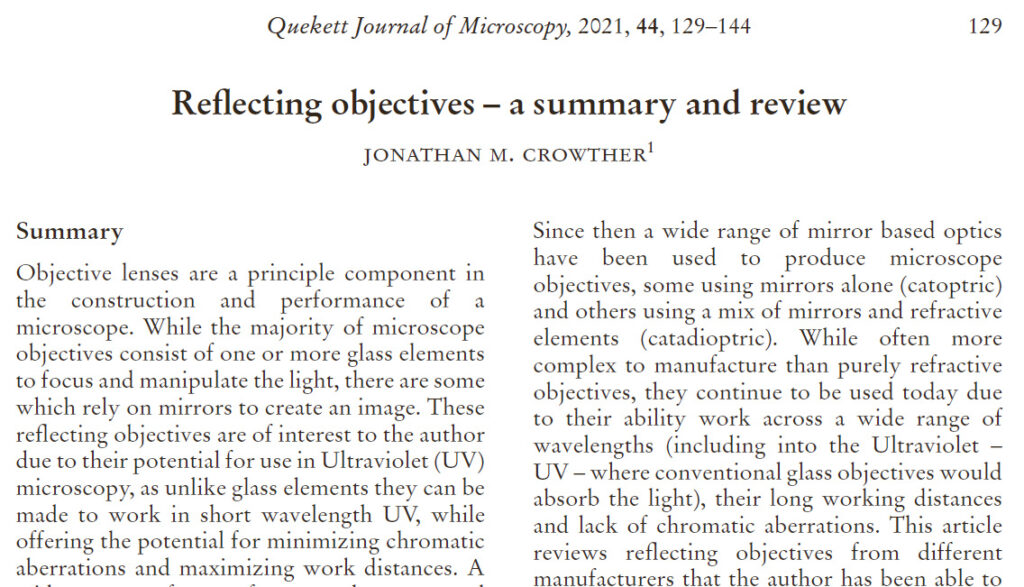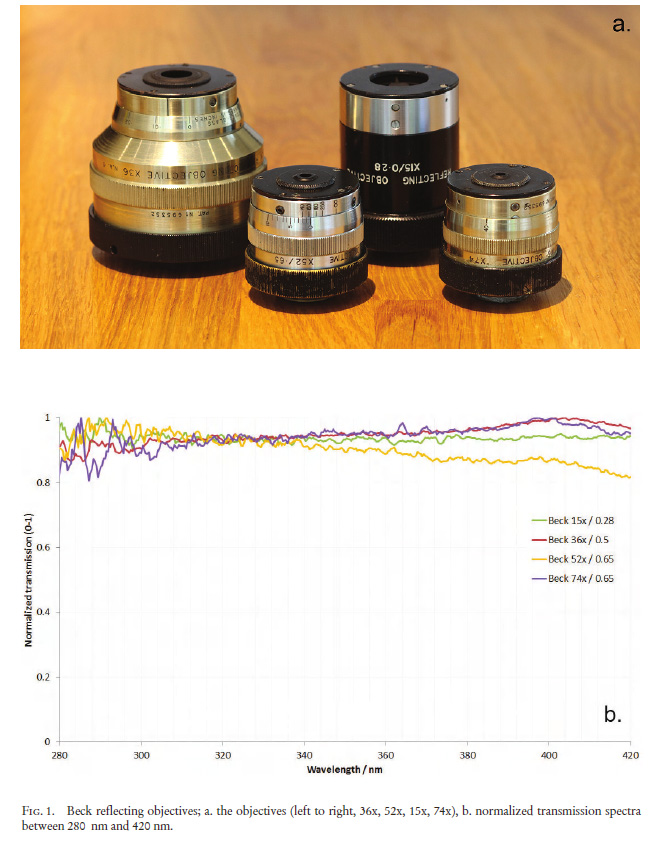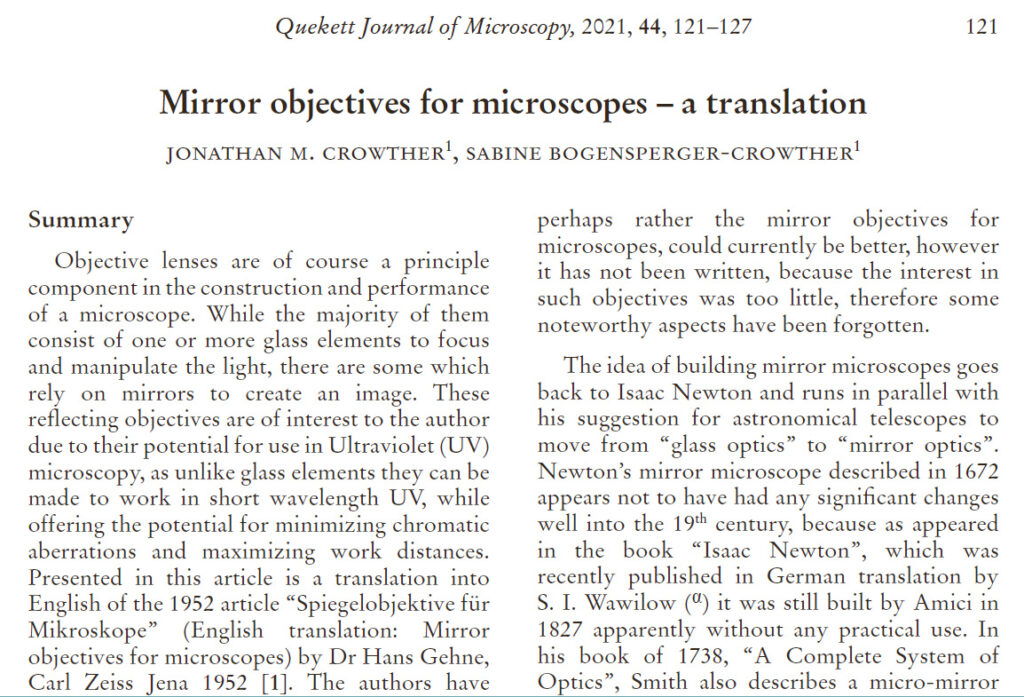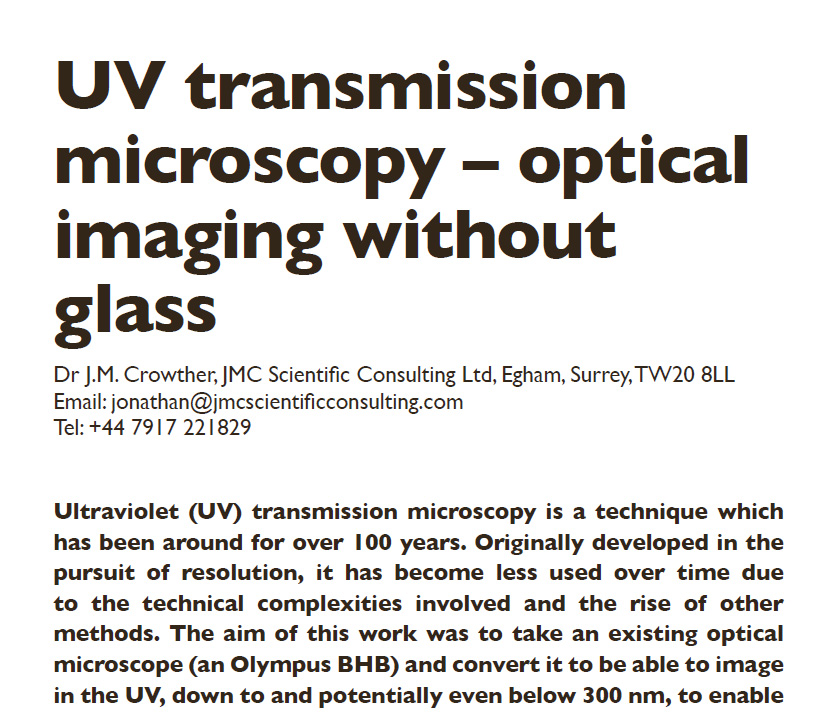2021 has been an ‘odd’ year to say the least. After the quietness of 2020 when a lot of my clients went out on furlough, this year has returned to being busy again, which is a certainly a good thing. In between the paid work, I still continue to do my own research and write and publish my own papers. Recently I have had 3 papers come out which have all stemmed from research into and building of a UV transmission microscope – two in the Quekett Journal of Microscopy and one with Infocus, the magazine of the Royal Microscopical society.
The first was a review and summary of a range of reflecting objectives from different manufacturers. This included their transmission in the UV which I measured using the setup I built for measuring camera lens transmission, and as far as I can tell is the first such comparison between different manufacturers.


The next was a translation into English of a 1952 paper which was published in German about the development of reflecting objectives. The paper was an interesting insight into the research being carried out by Carl Zeiss Jena in the middle of the 20th century.

The final one covered the aspects which needed to be considered when building my UV transmission microscope, including what needed to be changed and modified to make it transmit the short wavelength UV.


It’s great to see these articles come out and be published. But it is worth considering for a moment, why go to the effort of publishing this work like this? In a world where blogs (or whatever the current fashionable term for them is) are freely available and just a click away, is it really worth the effort to try and formally publish an article?
Consider first the effort. It is not unusual for me to spend over 100 hours to prepare an article for publication, and that is on top of of the work done to create the data that goes into it. Then there is the time between submission and publication – sometimes it can be months from submission of an article to getting it published. In fact I have one manuscript which has now been in review for over a year (come on guys, get it sorted). There’s the financial cost to consider as well with some journals – sometimes, and especially if you want colour figures, you need to pay for the privilege of seeing your article in print.
So, it is costly, time consuming, and a lengthy process to go down the formal publication route. Why bother then, when I can just write a blog entry like this and get the work out there to a wide audience? Well, there are a few benefits. Websites can be temporary. While I have no plans on retiring just yet, at some point my work will stop and this site will disappear. When it goes, so does the blog. A formal publication gets around that issue. The Quekett Journal of Microscopy for instance has been around since 1868, and I hope has many more years ahead of it, so my publications there will most likely outlive me.
Next to consider is the furtherance of science. Science progresses when ideas are shared and worked on. By sharing my work in articles in journals and magazines they reach audiences with similar interests, and hopefully sparks some ideas for the readers. There is another side to this of course, in that it helps promote my work, and this is certainly a consideration for me.
Then there is the concept of peer review. I believe in the work I do, and many journals I submit to are peer reviewed, in that the content of the article is reviewed by experts in the field before it can be published. This can be a difficult process and I have had papers which have needed rewriting (sometimes more than once) to get them to a state suitable for publication. Think of it this way though, if you believe in the work you do and the relevance it has, then it could well be of benefit to others and should be published. If you don’t believe in it, then why on Earth are you wasting your time doing it?
At this stage, I would to point you in the direction of both the Quekett Microscopical Club and the Royal Microscopical Society. Both of these offer valuable resources for the researcher and are worth checking out if you have an interest in microscopical imaging.
Publication of research certainly takes effort but the rewards gained from the process can very much outweigh that. I hope you have found this interesting (if you made it this far) and if you want to know more about any of my work covered here, or my other research topics please drop me a message.
